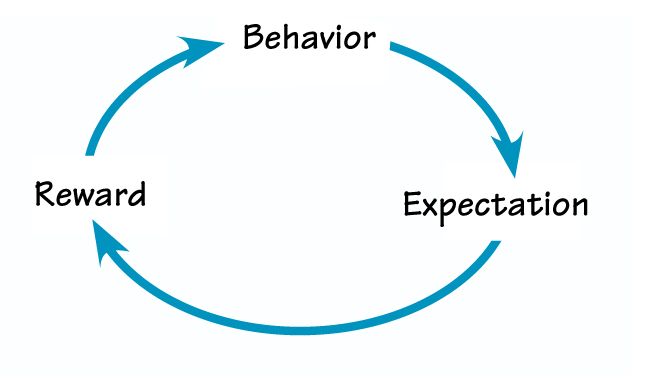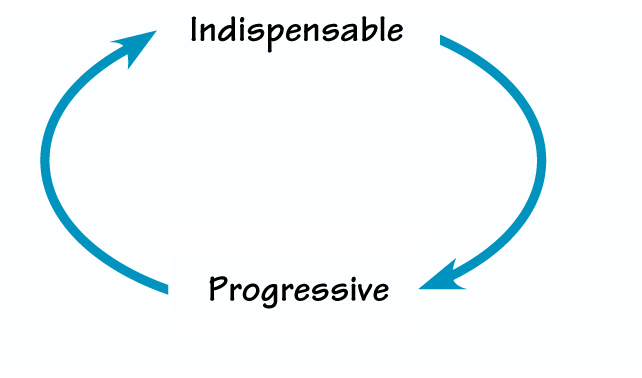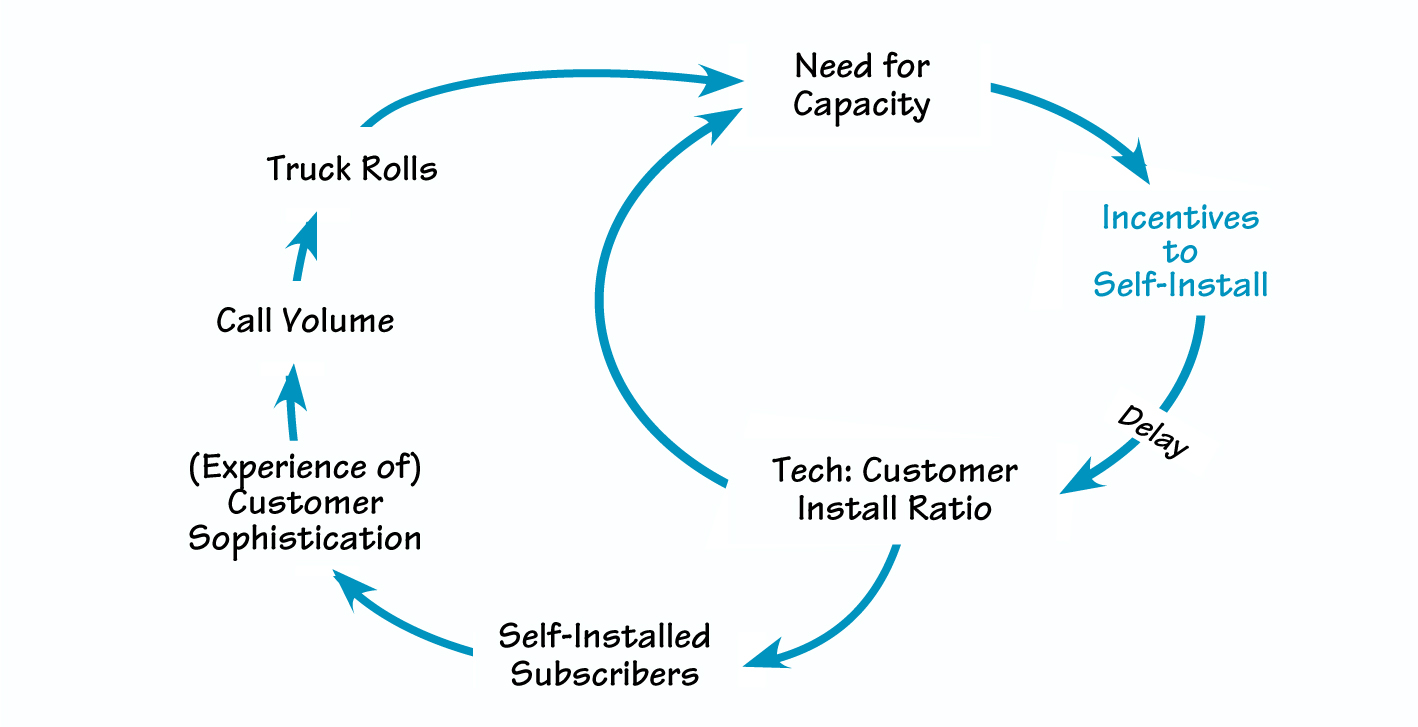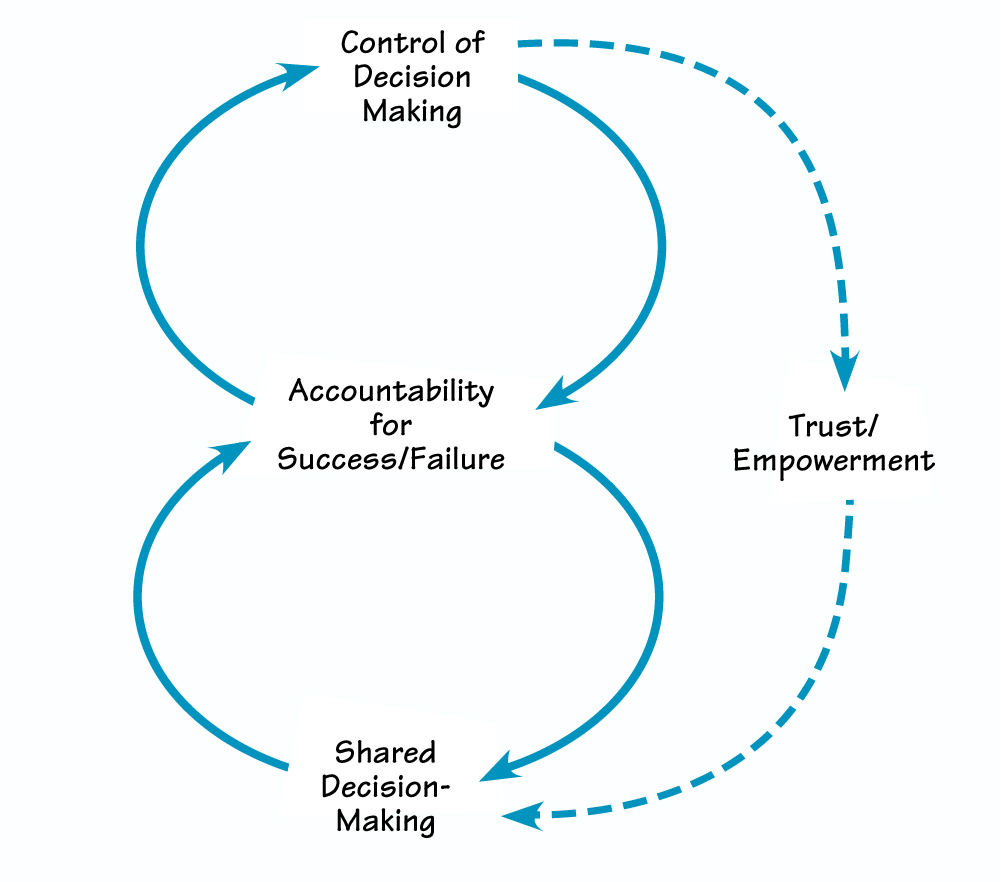As with any innovative methodology, introducing systems thinking to business leaders without turning them off is a key challenge. Overcoming this challenge requires presenting systemic concepts and tools at the right “strategic moment,” when leaders are confronting a performance issue and are ready to learn a different approach. It also involves transferring new methods in a way that doesn’t create the expectation that executives must devote many hours to learning a body of knowledge.
I think of this process as being a soft introduction to the value of systems thinking for addressing complex problems. I have been putting systems thinking into practice and teaching it to others for close to 15 years. During that time, I have developed a spectrum of approaches for softly stimulating acceptance and learning while helping people tackle their most daunting performance challenges. The following are some ways in which I have successfully used systems thinking with a wide variety of organizational clients.
Drop-In/Ad Hoc Applications
For a consultant or facilitator, the use of strategic moments to introduce systems concepts can be powerful. These are those spontaneously occurring situations in a business meeting when the drop-in use of a simple balancing or reinforcing loop can explain or illuminate a previously murky situation. For example, to illustrate the point that organizations get the behavior they reward, I draw the following loop:

The key in such situations is to use natural language to bring the point across. For example, say “these two things affect each other” rather than “these two variables are interdependent” or “this causes the behavior to spiral out of control” versus “this is a reinforcing loop.” The use of systems thinking jargon right off the bat can be off-putting and perhaps even perceived as hostile (, “sit-up, pay attention, you’re not smart enough yet to realize this”). Metaphors (, “this process works in the same way that a thermostat controls the temperature in the room”) assist people in feeling they have discovered something useful or relevant rather than something they “must know” or “must do.”
In addition, I remain particularly vigilant for problems that recur or never seem to go away no matter what fix the organization applies. This pattern of behavior not only indicates to me that a systemic dynamic is in effect but also that the group is probably ready to try something different. In these instances, because of the team’s frustration with the status quo, their readiness for learning is usually high.
Example. During a strategic planning meeting with the public health department of a large city, the group articulated what had sufficed for a master strategy in the past. I wrote the two items that they had been speaking about on a flipchart and connected them with arrows:

The group recognized this diagram as representative of their implicit strategy:, “To make ourselves indispensable so that we can pursue being progressive in public health matters, and to be progressive so that we will be indispensable.” Without being aware that the diagram was a systems loop, the group understood that it represented their collective thinking in a quick and visible way. The loop became a touchstone as the group made decisions about when and where this master strategy was still in effect and when and where it was not. Through this simple exercise, people from diverse backgrounds were able to reach a sophisticated understanding of the system’s behavior and make better informed decisions than before without feeling pushed to learn something new.
Tutorials
Another method I have found useful is to offer a short tutorial or “miniteach” on systems thinking. This lesson contains the basic elements with examples customized for the business model at hand. Because it links to the organization’s most vexing problems, the mini-teach can create buy-in for the methodology and value for the organization.
This investigation led the team to make strategic choices to balance their focus between the growing action (promotions) and the limiting factor (service representatives). The clarity that the systems diagram offered brought a sense of relief to some on the team, who proclaimed, “This is what we have been trying to say!” It also diminished the finger-pointing between marketing and operations as to who was at fault for hindering growth. A true collaborative effort to address the dynamics emerged.
Workshop or Systems Think-Tank
For organizations that are more advanced in their readiness and understanding, a formalized workshop approach can further the application of systems thinking tools and methods. The learning objectives of such a workshop are:
- A deep understanding of and experience with the concepts and tools of systems thinking
- Application of systems thinking to key issues in order to uncover leverage points/strategic actions
- Increased capability to apply systems thinking to key issues
The process for such a workshop involves:
- Introducing systems thinking tools, especially archetype templates, to offer new perspective on the “real” problems and leverage points for doing something about them
- Thoroughly investigating one problem/area/system as a “laboratory” for whether or not systems thinking will work for the organization
- Agreeing on fundamental actions to take
- Assessing where to go/what problem to address next, based on the workshop experience
FAILING TO 'FIX' TECHNICIAN CAPACITY

To free up technician capacity, the company offered incentives for customers to install the high speed modem and software themselves. As the ratio of technician to customer installs declined, technician capacity freed up, reducing the need for additional capacity. However, later self-installers tended to be less computer-savvy than earlier ones; for this reason, the volume of calls for assistance and truck rolls increased, creating a greater need for capacity once again.
The fix was initially successful: As the ratio of technician to customer installs declined (approaching 50:50), technician capacity freed up, allowing those employees to perform other services. Profitability on the highspeed internet access product improved, and the need for additional capacity declined.
Meanwhile, the number of selfinstalled customers increased. Because early adopters of the self-install incentive offer tended to be computersavvy people, new customers were generally less technically adept. For this reason, the volume of calls for assistance as well as truck rolls increased, creating a greater need for capacity and setting the cycle in motion again. In analyzing the dynamics, the group recognized this as a balancing process with one delay.
By recognizing this system (which was accomplished by having several sub-teams produce initial loops and then joining the work of the sub-teams together into one diagram), the cross-functional team came to agreement on where the leverage was in the system and how to take action. They decided to:
- Implement strategies to ensure successful customer self-installs
- Reduce truck rolls by utilizing and charging for installations over the phone
- Add a technical education component to the self-install incentive pitch
Archetypes
Archetypes are useful gateways into systems thinking. Because they represent a “blueprint” of human activity, they are applicable and understandable across a wide variety of individual experience. Many people respond to the stories that the archetypes encompass and recognize current or past problem patterns from the descriptions.
I find that business leaders can easily relate to the universal wisdom contained in “Shifting the Burden” and “Fixes That Fail,” although I seldom use that terminology. These archetypes in particular reveal how quick-fix problem solving fails to address root causes and undermines a team’s ability to utilize more fundamental solutions.
Example. I used the “Shifting the Burden” archetype to help a group of senior vice presidents at the home entertainment division of a movie studio to portray the decision-making process in effect between them and their executive vice presidents, their superiors. The senior VPs felt that decision-making at the highest level wasn’t timely or of high quality, leading to missed deadlines, increased costs, and dissatisfied employees. In conversations with both the senior and executive VPs, I was able to “draw out” the system (see “Declining Decision-making”).
DECLINING DECISION-MAKING

Because executive VPs felt accountable for the organization’s success or failure, they kept tight control over decision-making. The unintended consequence was lack of trust, which undermined shared decision-making in the organization. Senior VPs felt that a more sustainable solution would be for the executive VPs to delegate decision-making authority for individual projects to them.
The senior VPs perceived that the executive VPs felt accountable for the organization’s success or failure. The executive VPs’ response to that accountability was to keep tight control over decision-making—effectively making most decisions themselves. The unintended consequence was lack of trust in the organization. Also, the senior VPs felt that they weren’t empowered to make decisions of any consequence. They believed that a more sustainable solution would be for the executive VPs to delegate decision-making authority for individual projects to them.
The portrayal of the dynamic with this diagram had multiple effects. It allowed the two groups to conduct a depersonalized conversation and to collaborate to “attack the problem, not the people.” The graphic also let the executive VPs explore why they felt that they were solely responsible for the organization’s success or failure. As a result of these discussions, the executive VPs have delegated more decision-making to senior VPs. They now conduct problem-solving sessions with a focus on organization-wide issues rather than product-specific issues— focusing on decisions that only they can make.
It’s important to notice here that I never once termed this diagram an example of the “Shifting the Burden” archetype or introduced reinforcing or balancing loops. I simply identified a natural, recognizable pattern and put it into a picture with terms relevant to the leaders who were exploring the situation. Not only did
Check-ups or maintenance programs use objective measures of a system’s performance to periodically diagnose problems that might not be apparent to someone on the inside
this approach allow the VPs to come to terms with a serious and difficult situation, it also gave me license to continue to use this method elsewhere in the organization.
Organizational Assessments
I frequently use systems loops during organizational assessments, where the purpose is to evaluate what’s working and what needs attention. By presenting my observations in the form of a diagram, I have found that teams of businesspeople can come to quick agreement about the problem, which leads to quicker agreement on solutions.
Example. I conducted an assessment of the relationship between the executive director and the board of directors for a Boston-area community health clinic. The relationship had broken down and resolution was not forthcoming. Using the tools of systems thinking, I revealed in a non-blaming way what I saw to be the current relationship pattern (click here to go to “Assessing Organizational Dynamics”). As a result, the group was able to conduct a difficult conversation in a truthful manner. This process led to breakthroughs in trust, openness, and role clarity between the board and the executive director.
As I saw the situation, the quality of the relationship between the executive director and the board had declined, which in turn had reduced trust and openness about the clinic’s financial and operational situation.
The lack of openness was a reason for the increase in turnover among board members and a decline in the clarity and meaningfulness of the role of the remaining members. That decline reduced the willingness of the board as a whole to contribute and raise funds for the organization. The drop in fundraising and contribution of the board led to the perception that the board was not an entity that added great value to the organization, further eroding the quality of the executive director–board relationship.
An additional loop fed off of the main loop, wherein the decline in trust made it difficult to recruit board members and keep the size of the board at the level that was required by the workload. This rise in the work demands on the remaining board members led to an increase in their sense of fatigue and, ultimately, a surge in board turnover.
This depiction, whether completely accurate or not, got all the variables “in the room” and made them discussable. It also showed the impact that each variable was having on the others, so that all could “own” the system rather than attribute the problem to either the executive director or the board.
In using systems loops in assessment situations, it is important to communicate that they represent just one person’s way of perceiving the situation—it may be right, it may be wrong, but it gives the group a starting point to non-judgmentally consider a situation and what to do about it. In this case, systems thinking is much like a shared vision: it is not so much what it actually is that matters, but what it does for people.
People and organizations change—rapidly, strongly, thoroughly—when ready to change.
Key Lessons Learned
To summarize, here are some of the key lessons I have learned in using systems thinking as a business tool and transferring the capability to others:
- Limit the jargon—it can be off-putting to people. Use as much familiar language as possible.
- Seek out natural applications versus forced ones. Let the teaching and application come out of a current business situation. Drop in the lesson rather than force-feed the group with a systems thinking curriculum.
- Appreciate and validate people’s existing wisdom and experience. Convey that systems thinking is a col- lective language for us to think and act clearly together around that existing capacity.
- Look for instances of frustration with long-standing issues. These situations are ripe for a systems approach, and people will likely be ready to look at them with fresh eyes.
- Help people see the interrelationships that are intuitive but not collectively represented. Use simple loops and build from there.
As one client put it, “This is a means to see the complexity of the business and to recognize that most of the time we can’t do quick fixes and expect to succeed. While our culture supports ‘just fix it, now!’ we must develop a level of understanding and tolerance for complexity.” For me, this kind of understanding is one of the best outcomes of all.
Jack Regan is principal of Metis Consulting Group, Inc., a management consulting and training firm whose mission is to initiate and build workplace communities where individuals and organizations realize the results that most matter to them. Over the past 16 years, Jack has focused on the design, facilitation, and management of organizational change. He has worked with leaders and teams in a variety of industries and communities on strategic thinking, planning, and implementation, and has used his consultation expertise to enable clients to produce both demonstrable business results and relevant cultural renewal.
